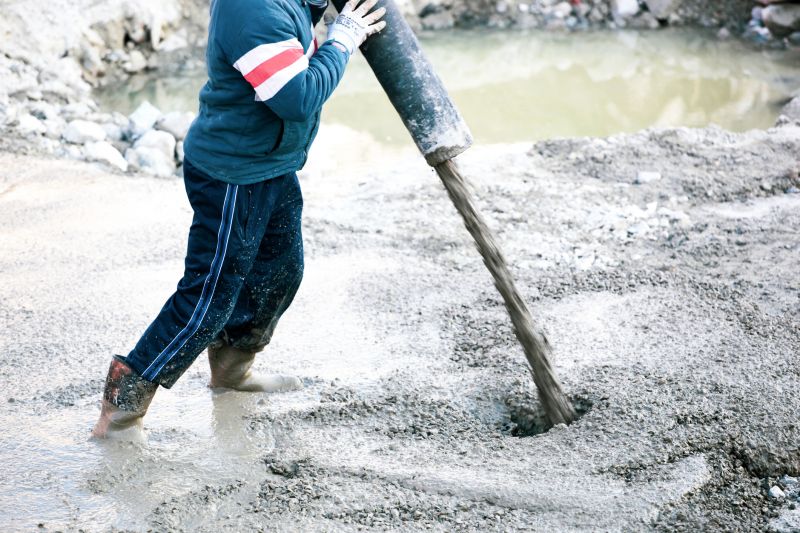Expert Picks For Essential Cement Painting Supplies
A carefully selected range of supplies trusted by professionals to ensure quality and consistency in your cement artwork.
 Creating cement paintings involves a unique blend of artistic expression and durable materials. Artists often utilize specialized tools and products to achieve the desired textures, finishes, and longevity in their cement-based artworks. From surface preparation to sealing, each step requires specific products that ensure the artwork remains vibrant and intact over time. The choice of materials can significantly influence the final appearance, whether aiming for a rustic, industrial, or modern aesthetic.
Creating cement paintings involves a unique blend of artistic expression and durable materials. Artists often utilize specialized tools and products to achieve the desired textures, finishes, and longevity in their cement-based artworks. From surface preparation to sealing, each step requires specific products that ensure the artwork remains vibrant and intact over time. The choice of materials can significantly influence the final appearance, whether aiming for a rustic, industrial, or modern aesthetic.
Top Overall Option
Multi-Purpose Cement Art Primer
A versatile primer designed to enhance adhesion and surface uniformity for cement paintings. It provides a reliable base for various coloring agents and finishing products, helping artists achieve consistent results. Its compatibility with different cement types and ease of application make it a preferred choice for both beginners and experienced artists.
Types of Products For Cement Paintings
Acrylic Cement Colors
Water-based pigments formulated specifically for cement surfaces, offering vibrant and durable coloration.
Epoxy Sealants
Protective coatings that provide a glossy or matte finish, sealing cement artwork against moisture and wear.
Cement Surface Primers
Primers that improve adhesion and surface smoothness before applying paints or finishes.
Texturing Agents
Additives that create various textures and finishes on cement surfaces for artistic effects.
Concrete Stains
Chemical-based stains used to impart translucent color effects to cement artworks.
Acrylic Sealers
Clear coatings that enhance durability and provide a protective barrier for painted cement surfaces.
Cement Trowels and Spatulas
Tools essential for shaping, smoothing, and applying products on cement surfaces.
Color Pigments
Powdered or liquid pigments compatible with cement for adding color to artworks.
Resin Coatings
Protective resin layers that add gloss and durability to cement paintings.
Textured Rollers
Tools for creating patterns and textures on cement surfaces during application.
Cement Sealant Sprays
Sprayable sealants for quick and even protective coating application.
Color Mixers
Tools or products designed to blend and customize cement pigments for specific hues.
Finishing Waxes
Wax coatings that add a subtle sheen and additional protection to cement artworks.
Anti-Crack Additives
Products that reduce the risk of cracking in cement surfaces during curing and drying.
Cement Repair Patches
Materials used to fix imperfections or damages in cement artworks before finishing.
Glow-in-the-Dark Pigments
Specialized pigments that add luminous effects to cement paintings for nighttime display.
Popular Choices
Widely used for their ease of application and color versatility on cement surfaces.
Popular for providing a durable finish that safeguards cement artwork from environmental factors.
Favored for creating unique surface effects and enhancing visual interest.
Complete sets of pigments for mixing custom shades suited to individual projects.
Popular for adding translucent color variations and depth to cement surfaces.
Chosen for their high-gloss finish and protective qualities.
Convenient for quick, even application of protective coatings.
Used for creating consistent patterns and textures easily.
Commonly added during mixing to improve surface integrity.
Essential for preparing surfaces for painting or sealing.
Popular for adding luminous effects to cement artworks.
Preferred for adding a subtle sheen and extra protection.
Chosen for their durability and high-gloss finish.
Favored for creating precise and consistent hues.
Commonly used for fixing imperfections before finishing.
Popular for quick and uniform application over large surfaces.
For those working with cement paintings, selecting the right products is essential for achieving professional results. This includes primers that promote adhesion, various types of pigments or colorants compatible with cement, and finishing products that protect the artwork from wear and environmental factors. Additionally, tools such as spatulas, brushes, and spray applicators help artists apply these products evenly and creatively.
Proper maintenance and sealing products can extend the life of cement paintings, preventing cracking, discoloration, and deterioration. Whether creating murals, decorative panels, or standalone pieces, artists benefit from a comprehensive set of products designed specifically for cement surfaces. Understanding the different types of products available can help artists and hobbyists alike to select the most suitable options for their projects, ensuring their cement artworks remain striking and durable over time.
Key Buying Considerations
- Compatibility with cement surfaces and intended finish type.
- Ease of application, especially for beginners.
- Durability and resistance to environmental factors like moisture and temperature changes.
- Compatibility of pigments and colorants with cement for vibrant, long-lasting color.
- Type of finish desired, such as matte, satin, or glossy.
- Protection against cracking, chipping, and wear over time.
- Ease of cleaning and maintenance after application.
- Availability of color options and mixing capabilities.
- Application tools required and their suitability for the project scope.
- Sealing and finishing products that enhance longevity and appearance.
- Product drying and curing times to fit project timelines.
- Brand reputation and user reviews for reliability.
- Cost-effectiveness and value for money.
- Environmental considerations, such as fumes or VOCs, if relevant.
- Compatibility with other decorative additives or texturing agents.
